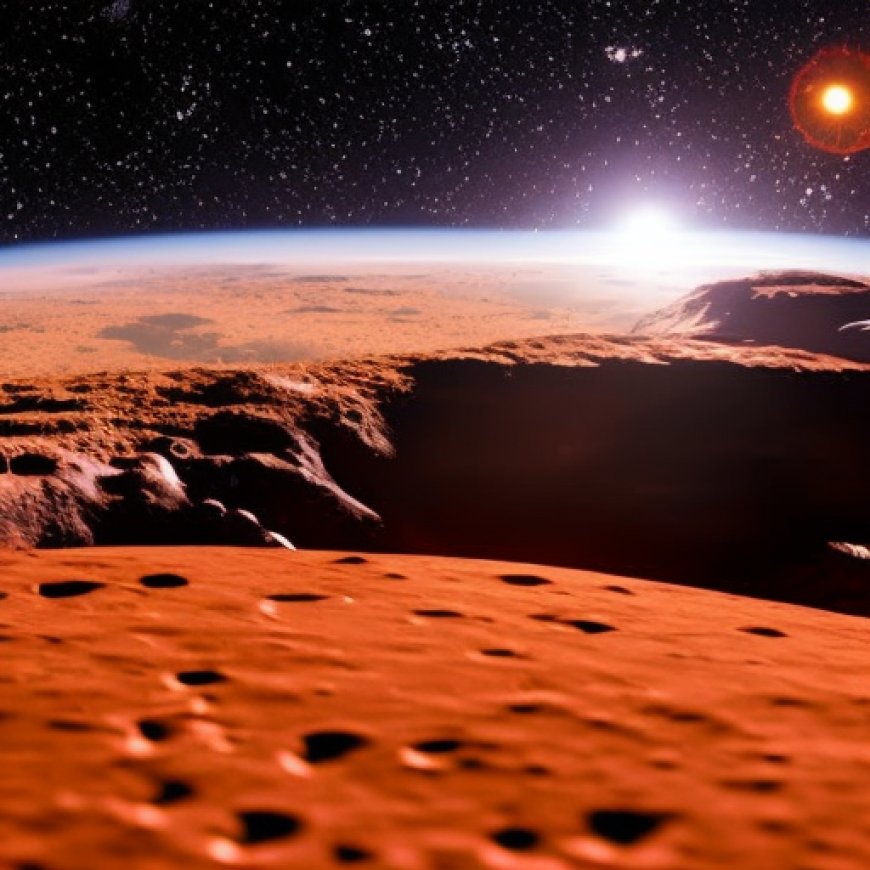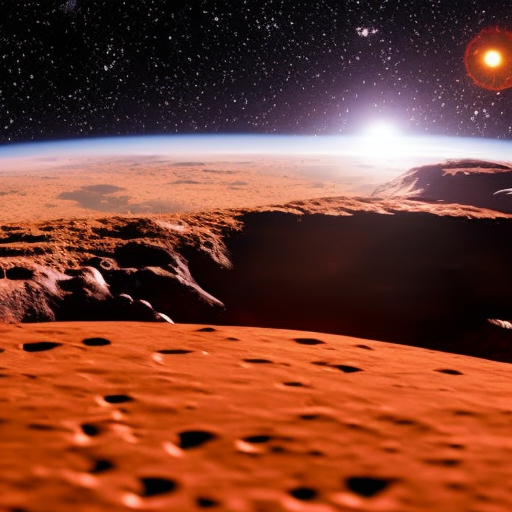This is what the Earth and moon look like from Mars
Is it a bird? Is it a plane? No, it's Earth as pictured from Mars in a rare snap taken 180MILLION miles away Daily Mail


Is it a bird? Is it a plane? No, it’s Earth as pictured from Mars in a rare snap taken 180MILLION miles away
By Stacy Liberatore For Dailymail.com
Updated: 16:57 EDT, 18 July 2023
To the uninitiated, they may look like fuzzy white dots and blobs on a gray background.
But what you’re looking at is actually an incredibly rare snap of the Earth and the moon taken on Mars – 187 million miles away.
A European Space Agency’s (ESA) Mars orbiter snapped the epic images as it circled the Red Planet, capturing the cosmic objects moving across the Martian sky.
The white dot is Earth, and the fainter blob is the moon. The scene was snapped by the Mars Express craft that has been observing the distant world for 20 years to detect sub-surface water that could lead to finding signs of life.
Images of Earth and Moon from Mars
- May 15, 2023
- May 21, 2023
- May 27, 2023
- June 2, 2023
Mars Express’s 20th Anniversary
Jorge Hernández Bernal, who is part of the Mars Express team, said: ‘On the special occasion of Mars Express’s 20th anniversary since launch, we wanted to bring Carl Sagan’s reflections back to the present day, in which the worsening climate and ecological crisis make them more valid than ever.
‘In these simple snapshots from Mars Express, Earth has the equivalent size as an ant seen from a distance of 100 meters, and we are all in there.
‘Even though we have seen images like these before, it is still humbling to pause and think: we need to look after the pale blue dot, there is no planet B.’
Mars Express Mission
The amazing video is a sequence of images taken by the super-resolution channel (SRC) of Mars Express’s High-Resolution Stereo Camera (HRSC), primarily used to observe Mars’s two moons and the stars.
Contributions of Mars Express
- Photographing the entire surface of Mars in high resolution
- Producing a detailed color map of the minerals on the surface
- Mapping the atmosphere
- Probing beneath the surface using radar
20th Anniversary Celebration
On the 20th anniversary of Mars Express, ESA shared ‘live footage’ of the Red Planet with the public for the first time.
Mars has only been previously seen through images from orbiters and landers exploring it, usually days after the shots were taken.
Around noon Eastern, 12pm ET (5pm UK time), new pictures were beamed down approximately every 50 seconds.
Scientific Discoveries by Mars Express
- Discovery of hydrated minerals that form only in liquid water, confirming that Mars was once much wetter than it is today
- Detection of subsurface layers of water ice
- Indications of the possible presence of methane, which is attributed to active volcanism and biochemical processes on Earth
- Highly elliptical orbit enabling the spacecraft to look beyond Mars to survey its two tiny moons
- Acting as a communication relay between Earth and various NASA spacecraft
‘Mars Express’s Visual Monitoring Camera, dubbed the Mars Webcam, was not planned for such record-breaking,’ ESA shared in a statement.
‘Its primary job, 20 years ago, was to monitor the separation of the Beagle 2 lander from the ‘MEX’ spacecraft. Once it had done that and reported back, it was turned off.
‘Like the monitoring cameras on board ESA’s Juice spacecraft, which send back visuals of instruments and solar arrays being deployed, it wasn’t meant to be a science instrument.
‘It didn’t need to take precisely accurate images. And yet, here we are.’
SDGs, Targets, and Indicators
-
SDG 13: Climate Action
- Target 13.1: Strengthen resilience and adaptive capacity to climate-related hazards and natural disasters
- Target 13.2: Integrate climate change measures into national policies, strategies, and planning
- Target 13.3: Improve education, awareness-raising, and human and institutional capacity on climate change mitigation, adaptation, impact reduction, and early warning
- Indicator 13.1.1: Number of deaths, missing persons, and directly affected persons attributed to disasters per 100,000 population
- Indicator 13.2.1: Number of countries that have integrated mitigation, adaptation, impact reduction, and early warning into their national policies, strategies, and planning
- Indicator 13.3.1: Number of countries that have communicated the strengthening of institutional, systemic, and individual capacity-building to implement adaptation, mitigation, and technology transfer
-
SDG 15: Life on Land
- Target 15.1: Ensure the conservation, restoration, and sustainable use of terrestrial and inland freshwater ecosystems and their services
- Target 15.2: Promote the sustainable management of all types of forests, halt deforestation, restore degraded forests, and substantially increase afforestation and reforestation globally
- Target 15.5: Take urgent and significant action to reduce the degradation of natural habitats, halt the loss of biodiversity, and protect and prevent the extinction of threatened species
- Indicator 15.1.1: Forest area as a proportion of total land area
- Indicator 15.2.1: Progress towards sustainable forest management
- Indicator 15.5.1: Red List Index
Analysis
-
SDG 13: Climate Action
The article mentions the worsening climate and ecological crisis, highlighting the need to look after the Earth. This aligns with SDG 13, which aims to take urgent action to combat climate change and its impacts.
The targets under SDG 13 that can be identified based on the article’s content are:
- Target 13.1: Strengthen resilience and adaptive capacity to climate-related hazards and natural disasters
- Target 13.2: Integrate climate change measures into national policies, strategies, and planning
- Target 13.3: Improve education, awareness-raising, and human and institutional capacity on climate change mitigation, adaptation, impact reduction, and early warning
The article does not explicitly mention indicators related to these targets.
-
SDG 15: Life on Land
The article discusses the Mars Express craft’s observation of the Martian surface to detect sub-surface water that could lead to finding signs of life. This aligns with SDG 15, which aims to protect, restore, and promote sustainable use of terrestrial ecosystems, sustainably manage forests, combat desertification, halt and reverse land degradation, and halt biodiversity loss.
The targets under SDG 15 that can be identified based on the article’s content are:
- Target 15.1: Ensure the conservation, restoration, and sustainable use of terrestrial and inland freshwater ecosystems and their services
- Target 15.2: Promote the sustainable management of all types of forests, halt deforestation, restore degraded forests, and substantially increase afforestation and reforestation globally
- Target 15.5: Take urgent and significant action to reduce the degradation of natural habitats, halt the loss of biodiversity, and protect and prevent the extinction of threatened species
The article does not explicitly mention indicators related to these targets.
SDGs, Targets, and Indicators
| SDGs | Targets | Indicators |
|---|---|---|
| SDG 13: Climate Action |
|
|
| SDG 15: Life on Land |
|
|








